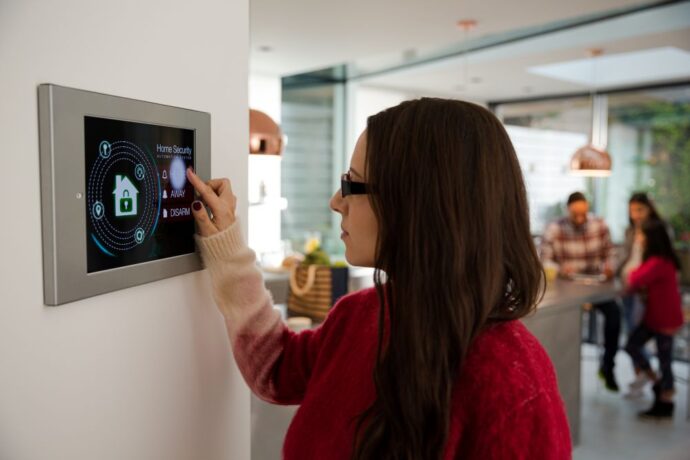
The Shift from Efficiency to Emotion
For years, technology in the home focused on efficiency—devices that turned lights on, adjusted temperature, and monitored security. The goal was convenience. Now, a quiet transformation is underway. The next wave of innovation aims not only to automate but to understand, moving from mechanical responses to emotional ones. To explore how responsiveness and user experience are shaping new forms of engagement in digital environments, you can click here for examples of how adaptive interaction is changing modern behavior across different contexts.
The term “empathic technology” describes systems designed to detect and respond to human emotion. In the context of homes, it suggests an environment that listens, interprets, and adjusts based on how people feel. The result is a space that interacts rather than simply reacts. This shift marks a turning point in how we think about living with machines—not as tools, but as quiet participants in our emotional lives.
Understanding Empathic Technology
Empathic technology builds on advances in sensors, data analysis, and artificial intelligence. Instead of focusing only on commands, these systems interpret tone, gesture, and physiological signals to infer mood or state of mind. For example, they may detect stress through voice changes or relaxation through posture and breathing patterns.
The core principle is adaptation. Where older systems followed fixed inputs, empathic systems aim to anticipate needs. If a person enters the room tired, the system might dim lights, lower noise, or adjust temperature without being asked. The intent is not to replace human emotion but to complement it—to create a form of digital empathy that enhances comfort and connection.
This evolution raises a broader question: what does it mean for technology to “understand” us? Machines don’t feel in the human sense. They analyze data and match patterns. Yet, by translating emotion into measurable signals, they begin to simulate empathy in functional ways.
The Psychology of Interaction
Human beings respond instinctively to cues of care and recognition. When a space seems to “notice” how someone feels, the effect can be powerful. The brain interprets responsiveness as social engagement, even when the source is artificial.
Psychologists studying this phenomenon call it emotional reinforcement. When technology mirrors our states—calming when we’re stressed, stimulating when we’re sluggish—it subtly encourages balance. For older adults or people living alone, this form of interaction can also provide companionship, easing isolation.
At the same time, emotional feedback loops can be complex. If systems misinterpret signals or reinforce unhelpful patterns—such as accommodating prolonged inactivity—they risk amplifying problems instead of solving them. Designing empathy into technology therefore requires ethical consideration as much as engineering precision.
Data, Privacy, and Trust
Empathic systems rely on personal data: voice recordings, facial expressions, movement patterns, even heart rate. The more data they collect, the better they can learn. But that same data poses challenges around consent and privacy.
Unlike traditional home devices, empathic technology deals with intimate information—our emotions and reactions. To function responsibly, such systems must be transparent about what they measure and how it’s stored or shared. Without this trust, emotional technology could quickly feel invasive rather than supportive.
The debate extends beyond legal frameworks. It also touches on cultural comfort. Some people may welcome a responsive environment that “understands” them; others may find it unsettling. Acceptance may depend less on capability and more on control—how easily users can set boundaries and decide when the system listens.
The Social Meaning of an Emotional Home
When technology begins to interpret feeling, the home itself becomes part of emotional communication. It stops being a neutral backdrop and becomes a partner in daily rhythm.
In this sense, the emotional home serves not only comfort but reflection. By tracking patterns of mood and behavior, it can reveal habits that shape well-being. For example, consistent stress signals during certain hours might indicate overwork; irregular sleep patterns could prompt environmental adjustments.
This feedback turns the home into a mirror. It reminds occupants of their own behaviors, helping them manage health and stress more consciously. The goal is not surveillance but self-awareness—turning data into understanding rather than control.
Empathy as Design Philosophy
Empathic design extends beyond sensors and algorithms. It changes how spaces are conceived. Architects, designers, and engineers increasingly consider emotion as part of function. Light, temperature, texture, and sound all influence mood; technology becomes a tool to balance these variables in real time.
For example, lighting systems that follow natural circadian rhythms support sleep and alertness. Acoustic adjustments can reduce stress by managing noise levels. Over time, environments built on these principles may blur the line between architecture and psychology.
What distinguishes this approach from earlier automation is intention. The goal is not to make life easier, but to make it feel better. Empathy becomes a design value—a recognition that technology can shape emotion as well as efficiency.
The Risk of Overdependence
While empathic technology promises support, it also introduces new forms of dependence. If systems manage comfort, mood, and even motivation, people may lose some ability to regulate those states themselves. Emotional resilience could weaken if feedback is constantly external.
There’s also the question of authenticity. When emotion is mediated by machines, does it retain its meaning? A comforting sound or light adjustment may soothe in the moment, but can it replace genuine human empathy?
Developers face the challenge of designing systems that assist without dominating—tools that encourage awareness rather than control behavior. The best empathic technologies will likely operate in the background, enhancing human relationships instead of substituting for them.
Broader Applications and Implications
The logic of empathic technology extends beyond private homes. Hospitals, schools, and workplaces are beginning to experiment with systems that track emotional climate to improve comfort and productivity.
In healthcare, emotion-sensitive environments could support recovery by reducing anxiety and promoting rest. In education, they might help teachers identify when students lose focus or become frustrated. In public design, responsive infrastructure could adjust to crowd stress levels during emergencies.
These applications suggest a shift toward cities and communities that “feel” alongside their inhabitants. Whether this becomes reality depends not only on technical progress but on cultural trust—the belief that empathy, even when digital, can serve human needs without replacing human judgment.
The Future of Feeling Machines
As emotional computing advances, the challenge will not be creating smarter systems but more meaningful ones. The homes of the future may not speak in words but in subtle signals: a change in light, a gentle sound, a temperature shift that reflects understanding.
Such interactions will test our definitions of intelligence and emotion. If empathy can be simulated convincingly enough to improve well-being, does it matter whether it’s real? Some argue that intention—the human element—remains irreplaceable. Others see empathy as a process rather than a feeling, one that machines can share if they respond in ways that support life.
Ultimately, empathic technology forces us to rethink the relationship between emotion and environment. The next generation of smart homes may not just listen for commands but for meaning. In doing so, they may change what it feels like to be at home.
Conclusion
The move from smart homes to emotional homes represents more than a technological trend. It reflects a deeper shift in how people view technology itself—not as a tool of control but as a participant in daily emotion.
Empathic systems promise comfort, awareness, and connection, but they also demand reflection about privacy, dependence, and authenticity. The success of these systems will depend not on how much they can sense, but how wisely they respond.
If done well, the rise of empathic technology could turn the home into a genuine partner in human life—one that listens quietly, responds thoughtfully, and reminds us that intelligence, human or artificial, is most meaningful when it understands emotion.



